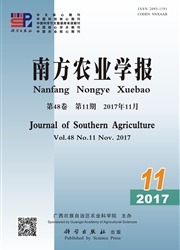

 中文摘要:
中文摘要:
利用差异蛋白质组学技术,比较研究不育系和保持系花药线粒体蛋白质组的变化,可以较全面地反映与育性相关蛋白质或多肽的表达变化特征,对于了解雄性不育花药败育发生的原因及其生理生化代谢机制具有重要作用。文章通过对植物线粒体蛋白质组学研究技术及其在揭示植物细胞质雄性不育(CMS)机理方面的研究进行综述,提出从线粒体差异蛋白质组学角度来揭示植物CMS的机理,是该领域研究的必然趋势。今后需加深对作物线粒体差异蛋白组学与其CMS机理的研究。此外,随着线粒体蛋白质组数据库的不断完善,蛋白质组学各种方法间的整合和互补,以及与其他学科(如基因组学、生物信息学等)领域的交叉研究,必将深入阐明CMS机理,从而加快植物杂种优势的利用。
 英文摘要:
英文摘要:
Plant mitochondria plays a key role in cytoplasmic male sterility(CMS).Using differential proteomics techniques to compare the changes in anther mitochondrial proteome of CMS liner and its maintainer liner can reveal the characteristic changes in expression of protein or polypeptide related to fertility,and plays an important role in elucidation of causes and mechanism of anther abortion in male sterility.The paper summarized the plant mitochondrial proteomics technologies and their applications in elucidating the mechanism of CMS.The researches on mitochondrial differential proteomics in crops and mechanism of CMS need to be studied extensively.With the gradual completion of data base of mitochondrial genome and proteomes,the integration and complementation of different proteomics technologies and the intersecting research of other subjects,the CMS may be explained thoroughly for utilization in plant heterosis.
 同期刊论文项目
同期刊论文项目
 同项目期刊论文
同项目期刊论文
 A comparative study of atp9 gene between a cytoplasmic male sterile line and its maintainer line and
A comparative study of atp9 gene between a cytoplasmic male sterile line and its maintainer line and Cloning, expression and characterization of a novel MADS-box gene from kenaf (Hibiscus cannabinus L.
Cloning, expression and characterization of a novel MADS-box gene from kenaf (Hibiscus cannabinus L. 期刊信息
期刊信息
